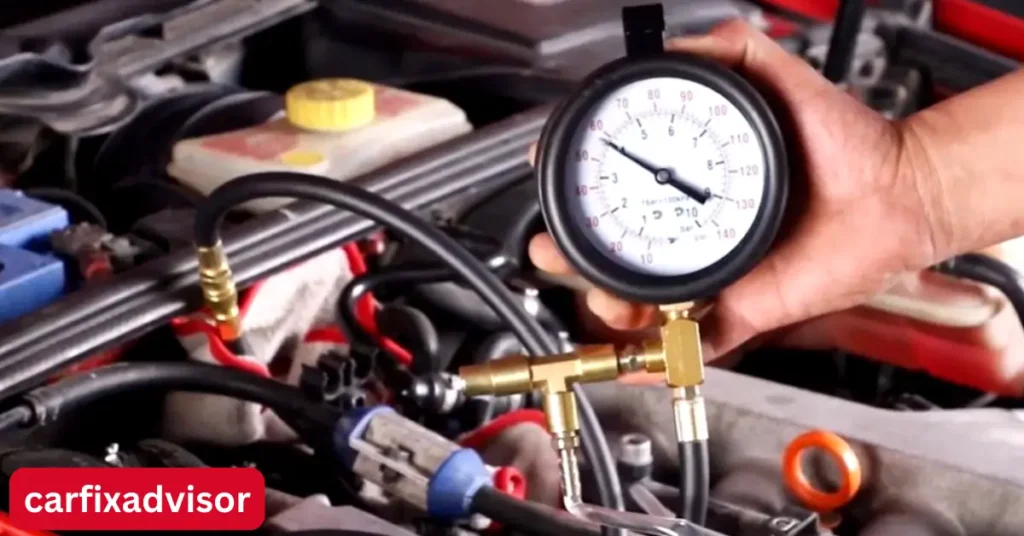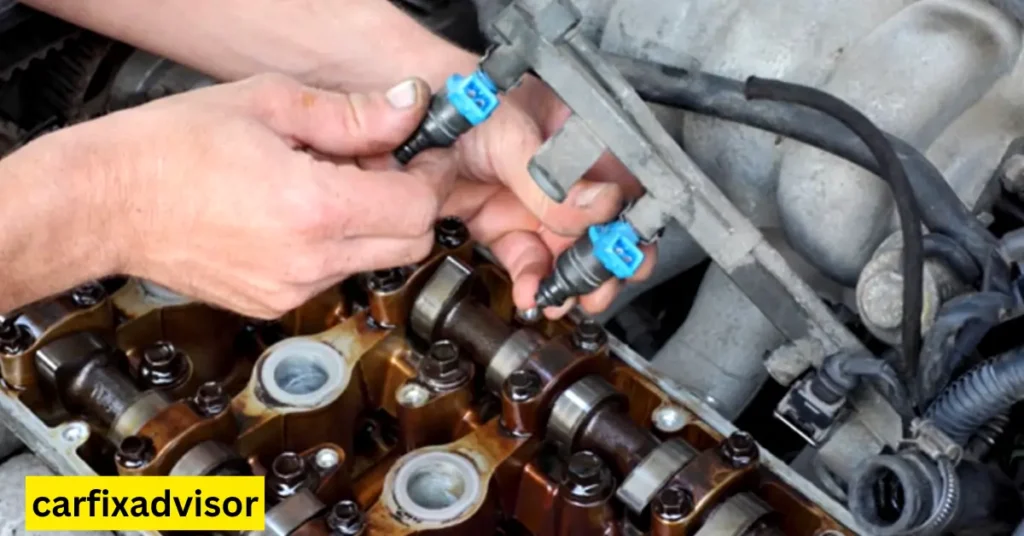A fuel pump is a critical component in any vehicle’s fuel system, delivering fuel from the tank to the engine. When the fuel pump starts to fail, it can lead to a variety of engine performance issues. In particular, low-pressure fuel pump failure can severely affect how the engine runs, leading to symptoms that every vehicle owner should be able to identify. In this article, we’ll explore the symptoms of low-pressure fuel pump failure, the causes behind it, and how to troubleshoot and fix the issue.
What is a low-pressure fuel pump?
Before diving into the symptoms, let’s clarify what a low-pressure fuel pump is and how it functions within the fuel system.
A low-pressure fuel pump is responsible for moving fuel from the gas tank to the fuel injectors under a lower pressure than high-pressure fuel pumps. It is typically found in older vehicles or in certain systems that don’t require the high fuel pressure associated with modern fuel-injection systems. While it doesn’t directly pressurize the fuel as much as its high-pressure counterpart, the low-pressure fuel pump is still essential in ensuring that fuel reaches the engine in the right quantity for proper combustion.
Symptoms of Low Pressure Fuel Pump Failure
When the low-pressure fuel pump begins to fail, it can lead to various engine performance problems. Recognizing these symptoms early can save you from more expensive repairs down the line. Here’s a closer look at the key symptoms to watch for:
1. Engine Misfires or Rough Idling
One of the first signs of a failing low-pressure fuel pump is engine misfires or rough idling. This happens because the engine isn’t receiving the right amount of fuel or fuel is being delivered erratically. When fuel pressure drops below the required level, the injectors can’t properly atomize the fuel, leading to incomplete combustion and engine misfires.
What to Watch For:
-
The engine might hesitate, stutter, or misfire when accelerating or idling.
-
The car may feel sluggish when trying to speed up, and you might experience uneven power delivery.
How to Fix It:
-
The fuel pump may need to be replaced if it’s delivering inadequate pressure. If the problem persists, it could be a sign of a clogged fuel filter, which restricts fuel flow.
2. Poor Acceleration and Loss of Power
If the fuel pump isn’t supplying the engine with sufficient fuel, the engine’s performance can suffer. This is most noticeable during acceleration, where you might notice the car sluggishly responding when you press the gas pedal. In extreme cases, the car may not accelerate at all.
What to Watch For:
-
Hesitation or stalling when trying to accelerate.
-
The vehicle is struggling to pick up speed, particularly during high-demand situations like driving uphill or merging onto highways.
How to Fix It:
-
A failing fuel pump may need to be replaced. Before replacing it, check for any issues with the fuel injectors or the fuel filter, as these can also affect acceleration.
3. Engine Stalling
Engine stalling is another common symptom of a failing low-pressure fuel pump. If the fuel pump can’t maintain consistent pressure, it can cause fuel starvation, leading the engine to stall. This is often noticed when you’re idling at a stoplight or when driving at low speeds.
What to Watch For:
-
The engine suddenly cuts off without warning.
-
The vehicle may start, then stall shortly after.
How to Fix It:
-
If the fuel pump is weak or failing, it will need to be replaced. Also, inspect the fuel lines for any blockages or leaks that may contribute to a loss of pressure.
4. Difficulty Starting the Engine
A common early sign of low-pressure fuel pump failure is trouble starting the vehicle. The engine may crank but fail to start because the pump is not delivering the proper fuel pressure to the injectors. This issue often worsens over time, especially if the fuel pump continues to degrade.
What to Watch For:
-
Extended cranking time before the engine starts.
-
Occasional failure to start, even if the car turns over normally on some attempts.
How to Fix It:
-
If the fuel pressure is too low, replace the low-pressure fuel pump. Ensure that the fuel filter isn’t clogged, as it can also impede fuel delivery to the engine.
5. Sputtering or Jerking While Driving
When a fuel pump begins to fail, the engine may sputter or jerk during driving. This happens because the engine is receiving an inconsistent fuel supply. Fuel sputtering can be particularly noticeable when you’re driving at a steady speed and the vehicle jerks unexpectedly.
What to Watch For:
-
The vehicle may feel as if it’s stuttering or jerking while cruising at a consistent speed.
-
Intermittent loss of power, especially at higher speeds.
How to Fix It:
-
Inspect the fuel system, including the low-pressure fuel pump and the fuel filter. If necessary, replace the low-pressure fuel pump and flush the fuel system to remove any contaminants.
6. Check Engine Light or Fuel Pressure Warning Light
If the fuel system detects a drop in pressure, it may trigger a check engine light or a fuel pressure warning light. The vehicle’s onboard diagnostic system (OBD-II) can identify abnormal fuel pressure readings and alert you to potential issues.
What to Watch For:
-
A persistent check engine light, accompanied by sluggish engine performance.
-
A fuel pressure warning light that stays illuminated on your dashboard.
How to Fix It:
-
Have the car diagnosed by a professional mechanic to identify the exact problem. A fuel pressure test will confirm whether the low-pressure fuel pump is the source of the issue.
Causes of Low Pressure Fuel Pump Failure
Understanding what causes low-pressure fuel pump failure can help you avoid future problems. While these pumps are generally durable, several factors can contribute to their premature failure:
-
Aging or Wear and Tear: Like any mechanical part, fuel pumps naturally wear down over time. The rubber components inside the pump can degrade, leading to lower fuel pressure.
-
Fuel Contamination: Contaminants such as dirt, rust, and debris in the fuel tank can damage the fuel pump over time, leading to a decrease in pressure.
-
Clogged Fuel Filter: A clogged fuel filter can cause pressure to drop by restricting fuel flow. Over time, the excess strain on the pump can lead to failure.
-
Electrical Failures: The fuel pump is powered by an electrical system, and issues with wiring or the pump’s electrical components can lead to poor pump performance.
-
Heat Exposure: Excessive heat can degrade fuel pump components, leading to failure, especially in vehicles that experience heavy use or frequent high temperatures.
How to Diagnose Low Pressure Fuel Pump Failure
If you suspect that your fuel pump is failing, there are a few diagnostic steps you can take before deciding to replace it:
-
Listen for Pump Sounds: When you turn the ignition on (without starting the engine), listen for a humming noise coming from the fuel tank. A functioning low-pressure fuel pump typically emits a soft hum as it primes the fuel system. If the sound is absent, the pump may have failed.
-
Check Fuel Pressure: A professional mechanic can perform a fuel pressure test to check if the pump is delivering the correct pressure. Low pressure readings are a strong indicator of pump failure.
-
Inspect Fuel Filters and Lines: A clogged fuel filter or damaged fuel lines can contribute to low pressure, even if the pump itself is in good condition. Replacing a clogged filter may resolve the issue.
Diagnosing Low Pressure Fuel Pump Issues and How to Fix Them
Now that we’ve covered the common symptoms of low pressure fuel pump failure, it’s time to focus on diagnosing the issue and resolving it. If you’re experiencing one or more of the symptoms mentioned earlier, addressing the problem promptly can save you from costly repairs and avoid engine damage.
In this section, we’ll guide you through the steps for diagnosing low pressure fuel pump failure, how to troubleshoot the issue, and the best course of action to take for repair or replacement.
Diagnosing Low Pressure Fuel Pump Failure
To accurately diagnose a failing low pressure fuel pump, you’ll need to perform a few checks. Below are the steps you can take to pinpoint the issue. Keep in mind that some of these steps require a certain level of mechanical knowledge and the right tools.
1. Fuel Pressure Testing
One of the most effective ways to diagnose a low pressure fuel pump problem is by performing a fuel pressure test. A fuel pressure gauge is connected to the fuel line to measure how much pressure is being generated by the pump. This test will show you whether the pump is providing the correct amount of fuel pressure required for proper engine function.
Steps to Perform Fuel Pressure Testing:
-
Locate the fuel pressure test port on your vehicle (usually on the fuel rail near the injectors).
-
Attach a fuel pressure gauge to the test port.
-
Turn the ignition key to the “on” position (don’t start the engine) and observe the pressure reading.
-
Compare the reading to the specifications in your vehicle’s manual. If the pressure is too low, it indicates a fuel pump issue.
What to Do If Fuel Pressure is Low:
-
If the pressure is lower than the manufacturer’s recommended level, you may need to replace the low pressure fuel pump.
-
If the pressure fluctuates or drops unexpectedly, there may be a blockage or issue with the fuel filter, fuel lines, or the fuel pump itself.
2. Check for Fuel Pump Noise
Another diagnostic method is listening for fuel pump sounds. When you turn the key to the “on” position, the low pressure fuel pump should make a faint humming sound as it primes the fuel system. If you don’t hear the usual sound, it could indicate that the pump is malfunctioning or has completely failed.
What to Do If No Noise is Heard:
-
Check the wiring and electrical connections to the fuel pump. If there is a problem with the electrical supply, such as a blown fuse or a faulty relay, the pump might not be receiving power.
-
If the wiring is intact and the pump still doesn’t make noise, the pump may need to be replaced.
3. Inspect the Fuel Filter
A clogged fuel filter can restrict fuel flow to the engine and create the same symptoms as a failing fuel pump, including rough idling, stalling, and loss of power. If the fuel filter is dirty or clogged, it will put additional strain on the fuel pump, leading to premature failure.
What to Do:
-
Check the fuel filter to see if it’s clogged. If you haven’t replaced the filter recently, it’s a good idea to replace it along with the fuel pump to ensure proper fuel flow.
-
A professional mechanic can perform a flow test on the filter to confirm whether it is the cause of fuel pressure issues.
4. Inspect Electrical Components
Since the fuel pump operates on electrical power, electrical issues can also contribute to low pressure fuel pump failure. If the wiring or electrical components of the fuel pump fail, the pump may not operate at full capacity.
What to Do:
-
Use a multimeter to check the voltage at the fuel pump. If the voltage is low, the pump may not be receiving enough power.
-
Check the wiring for any visible damage, such as frayed wires or loose connections. Ensure the pump’s relay and fuse are functioning properly.
How to Fix Low Pressure Fuel Pump Issues
Once you’ve diagnosed the cause of the low pressure fuel pump failure, the next step is to take action and fix the issue. Here are the most common solutions to repair or replace a failing low pressure fuel pump:
1. Replacing the Fuel Pump
If your fuel pump is found to be faulty, replacing it is often the best option. Depending on your vehicle’s make and model, replacing the low-pressure fuel pump can be a straightforward job, but it may require specialized tools and knowledge. If you’re not comfortable performing the replacement yourself, it’s best to leave it to a professional mechanic.
Steps to Replace the Fuel Pump:
-
Disconnect the vehicle’s battery to avoid any electrical issues.
-
Locate the fuel pump inside the tank or along the fuel line (depending on your vehicle).
-
Drain the fuel tank and remove any necessary components to access the pump.
-
Remove the old pump and install the new one, making sure to properly connect the fuel lines and electrical wiring.
-
Reassemble any parts you had to remove and reconnect the battery.
-
Test the new pump by turning the key to the “on” position and checking fuel pressure.
What to Do After Replacing the Pump:
-
Perform another fuel pressure test to ensure that the pump is providing the correct fuel pressure.
-
Start the engine and check for any unusual sounds or symptoms.
2. Replacing the Fuel Filter
If you find that the fuel filter is clogged, it should be replaced at the same time as the fuel pump. A clogged filter can prevent proper fuel flow and reduce fuel pressure, leading to engine issues. Replacing the filter is a relatively simple and cost-effective way to maintain a healthy fuel system.
Steps to Replace the Fuel Filter:
-
Locate the fuel filter, which is typically found along the fuel line or under the vehicle near the fuel tank.
-
Disconnect the fuel lines and remove the old filter.
-
Install the new filter, ensuring that the fuel flow direction matches the arrow on the filter.
-
Reconnect the fuel lines and test the system for proper operation.
3. Repairing Electrical Issues
If you’ve identified that an electrical issue is preventing the fuel pump from receiving adequate power, you may need to repair the wiring or replace damaged components such as fuses, relays, or connectors. Fixing these electrical issues can restore power to the pump and ensure proper operation.
What to Do:
-
Repair or replace any damaged wiring, fuses, or relays that are preventing proper power flow.
-
After repairs, test the fuel pump to ensure it’s receiving the correct voltage and operating properly.

Preventing Low Pressure Fuel Pump Failure
While low pressure fuel pump failure is common, there are steps you can take to extend the life of your pump and prevent premature failure. Here are some maintenance tips to keep your fuel pump in good working order:
1. Regularly Replace the Fuel Filter
As mentioned earlier, a clogged fuel filter can put extra strain on the fuel pump. Replacing the fuel filter at regular intervals will prevent clogging and reduce wear on the fuel pump.
2. Keep the Gas Tank Above One-Quarter Full
Running your vehicle with a low gas tank can cause the fuel pump to overheat. When the tank is near empty, the pump has to work harder to pull fuel, which can lead to premature failure. Keeping the tank above one-quarter full will ensure that the pump doesn’t overheat.
3. Use High-Quality Fuel
Fuel that is contaminated with dirt or water can damage the fuel pump and other components of the fuel system. Always buy fuel from reputable gas stations to reduce the risk of contaminants entering your vehicle’s fuel system.
4. Address Fuel System Issues Promptly
If you notice any of the symptoms of fuel pump failure (such as sputtering, stalling, or loss of power), address the issue immediately. Ignoring these signs can lead to further damage to the pump and other components of the fuel system.
Conclusion
Low-pressure fuel pump failure can significantly impact your vehicle’s engine performance, causing symptoms such as misfires, poor acceleration, and stalling. By recognizing these symptoms early, you can take action to resolve the issue before it leads to more severe engine problems. Regular maintenance, including fuel filter replacement and fuel system inspection, can help prevent fuel pump failure and extend the life of your vehicle’s fuel system.
If you notice any of the symptoms mentioned above, it’s important to have your vehicle inspected by a professional mechanic. Early detection and repair of fuel pump issues can save you time, money, and the hassle of further engine damage.
Meta Description: Learn about the symptoms of low-pressure fuel pump failure and how to identify them. Discover how to diagnose, troubleshoot, and fix fuel pump issues for better engine performance.

